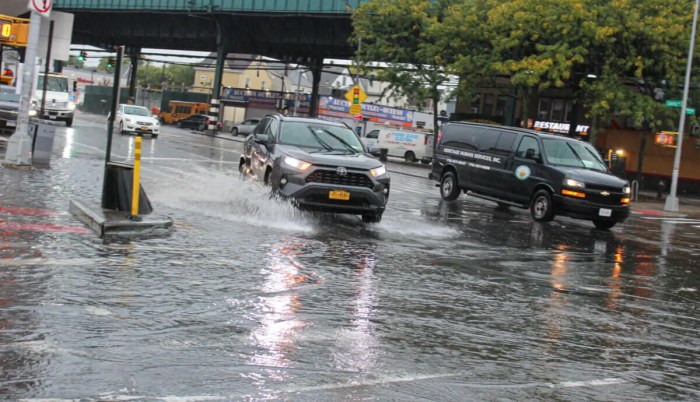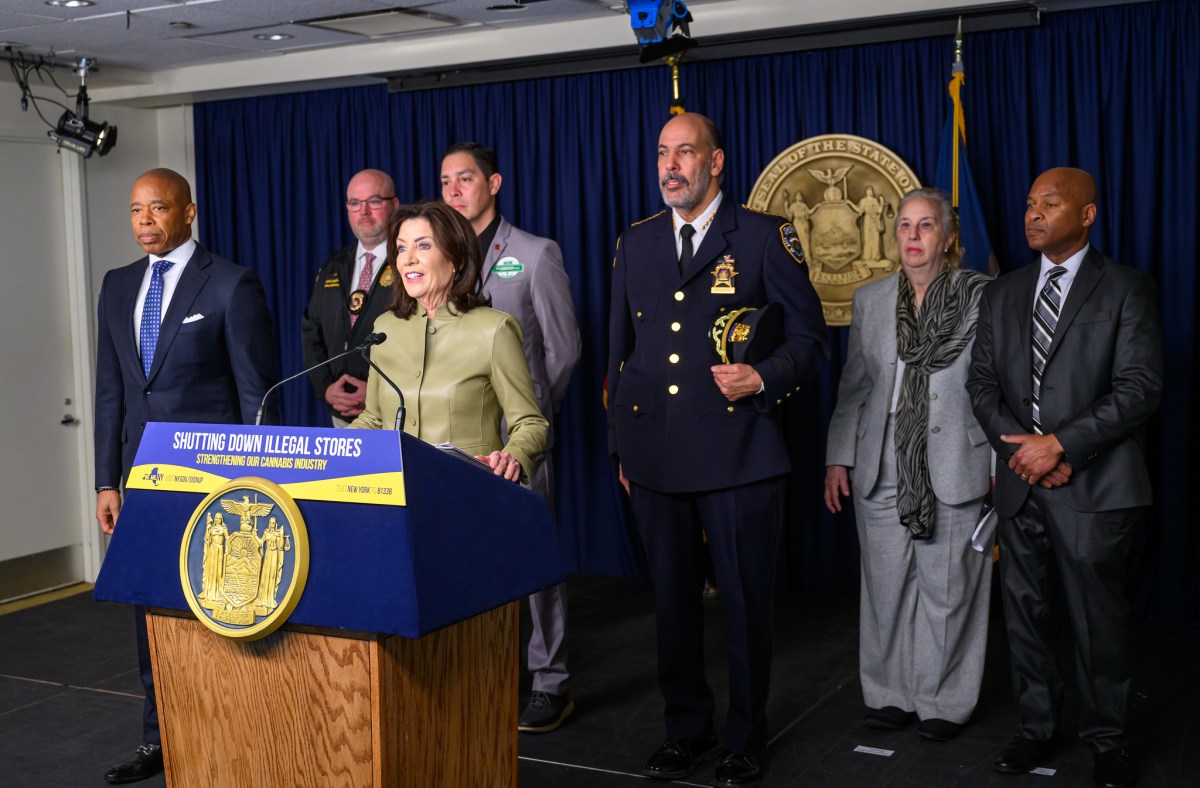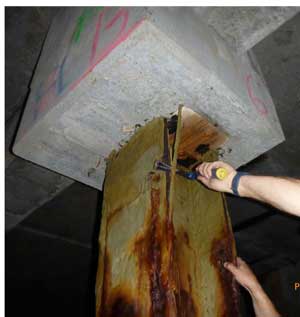
BY LINCOLN ANDERSON | According to a new study by developer Douglas Durst, the Hudson River Park Trust’s cost estimate for repairing the piles at Pier 40 is excessively high — as much as $50 million too high.
Earlier this year, Madelyn Wils, the Trust’s C.E.O. and president, and Daniel Kurtz, the Trust’s C.F.O. and executive vice president of finance and real estate, painting a dire financial picture of the aging West Houston St. pier, said it would cost $80 million over the next 30 years to fix its metal piles, which Wils numbered at 3,700.
Fourteen hundred of these piles — those in the worst condition — need to be repaired in the next five to 10 years, while the rest can be fixed in the following 10 to 15 years, Wils said then.
However, according to Durst, all of the 15-acre pier’s piles can be preserved in their current condition for as little as $30 million, by placing fiberglass jackets around them that are filled with concrete. The pier’s piles today don’t bear as much load as they did in past decades when its courtyard was used as a truck court, and they don’t need to, according to Durst.
Durst is chairperson of the Friends of Hudson River Park, the waterfront park’s former watchdog group recently turned private fundraising arm.
Several months ago, he floated an alternative plan for redeveloping Pier 40. Conceived along with Ben Korman, who used to run the pier’s parking operation, this plan would feature valet parking and a high-tech campus, while preserving the pier’s beloved courtyard sports field.
If a second-level deck were built so that the sports field could be raised above the flood plain — with the parking put on the level below the field — the piles would need more reinforcement, which would raise the cost of fortifying them up to $44 million. Following Sandy, Durst said his proposal now definitely calls for raising the field.
The Trust, for its part, has been pushing to open up the Hudson River Park Act of 1998 to allow a greater variety of potentially viable uses for the pier. One such currently unpermitted use that has generated significant interest — as well as substantial opposition — is residential housing at Pier 40. Housing would be a high-revenue, low-impact use, according to outside planning consultants retained by the local youth sports leagues to study ideas for the pier earlier this year.
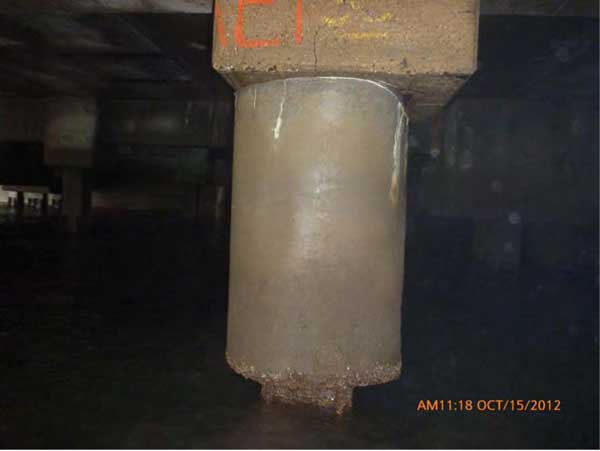
Durst, one of the city’s most prominent developers, personally does not feel residential would work on the pier.
In September, a Durst spokesperson said, “Douglas speaking for himself does not have an ideological issue, but a practical one — that [residential housing on Pier 40] will be too difficult to implement and construct and won’t generate the necessary revenue for the pier or the park.”
In an interview last week, Durst said Superstorm Sandy showed that building housing out on the pier would be a mistake.
“To me it proves that it doesn’t work on the pier,” he said.
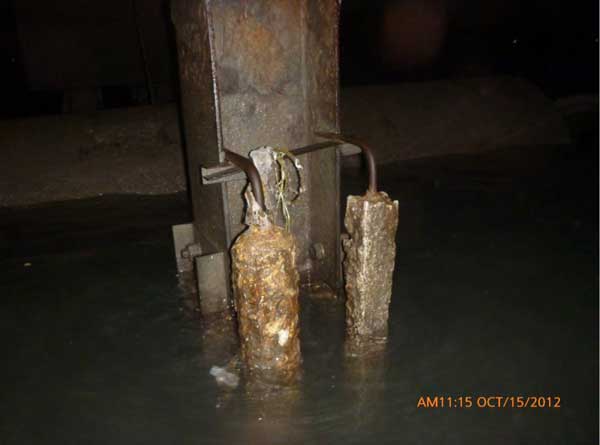
The Trust hired Halcrow to study the state of Pier 40’s piles in 2009. The more recent study commissioned by Durst was done by McLaren Engineers Group, which submitted its report on Oct. 25. For the $25,000 study, three divers spent three days checking the piles underwater, concentrating their efforts under the pier’s north side; another three days were spent checking the concrete pier’s underside.
Durst said the McLaren study is “complementary” to the previous Pier 40 study.
“The purpose was to confirm the Halcrow report of 2009,” Durst said. “It was part of a process for estimating cost [of the alternative Pier 40 proposal], and we wanted to see the deterioration [of the piles]” during the time between the two studies.
The Trust has used the Halcrow report as evidence that the pier’s condition is critical. However, Durst sees it differently.
“Both reports say the pier is in good condition,” Durst stated. “I’m not going to speak on what the Trust says.”
The McLaren report, Durst added, “shows that the pier, one, is not in any immediate danger of collapsing, and if you just wanted to keep it as it is, you could spend several million dollars over the next 10 years” to stabilize it.
Referring to the underside of the pier, Durst said, “The deck is in very good condition.”
In general, the pier’s concrete substructure won’t see any “significant structural degradation” for 20 to 25 years, the study found.
The key, Durst said, is to start the work on the piles A.S.A.P., which would mean the difference between relatively affordable encasement versus more expensive full-scale repairs.
“Right now, you could just encase the piles, and you wouldn’t have to repair them,” he said.
On the other hand, if the Trust waits “seven to eight years” from now to address the piles, he said, the problems and cost will be worse. Repairs might involve reinforcing the piles with steel splints.
The per-pile cost for reinforcement versus repairs is $8,500, for the former, compared to $12,750, for the latter.
However, Durst’s thinking on this differs from the Trust’s current outlook. At a recent meeting of the Trust’s board of directors, Diana Taylor, the board’s chairperson, publicly declared, “If it was up to me, not one more dime goes into Pier 40. Period.”
In addition, the pier’s cathodic protection system is “not effective,” the new report says. In the 1980s, all the piles were outfitted with “passive aluminum galvanic anodes” — small bars of metal which help protect the pilings from corrosion in the “splash zone,” just below the pier’s bottom.
The top of the piles have lost steel at a rate of between .05 and .15 inches over the three years between the two studies.
Slightly more than 1,000 piles, or close to one-quarter of the total amount, were rated to be in “severe condition,” according to the new report.
“If these corrosion rates continue unabated there could be areas of pile failure estimated to be within eight to 10 years,” the McLaren engineers found. “The pier structure is in satisfactory condition for the current usage, but the piles will continue to corrode unless proper protection is installed. … Accordingly, the piles need to be protected against corrosion, and as time passes and the condition worsens, the cost of necessary repairs grows geometrically, along with the severity of the corrosion.”
The last time repairs were made to Pier 40’s piles was in the 1980s, when three different type of fixes were tried. Some of these repairs have since “failed,” according to McLaren, such as epoxy sheaths peeling off.
Currently, the Trust is working on fixing the pier’s deteriorated roof, but hasn’t signaled that it would start fixing the piles in the immediate future. Wils has previously said that the Trust’s hope is to have some sort of plan for Pier 40 in place within the next five years or so, a plan that would take into account the pier’s long-term repair.
In the meantime, Wils has said, the pier will be in “liquidation mode,” with sections of it closed off as needed due to dangerous conditions owing to the pier’s decay, mainly referring to the roof.
According to Durst, the Trust has repaired about one-third of the pier’s rooftop.
“I think they should have done it years ago,” he said.
Earlier this year, Wils and Kurtz reported that it would take from $26 million to $30 million to fully repair the pier’s entire roof. Durst hasn’t done a cost analysis of the roof repairs, noting, “The roof’s going to cost what it’s going to cost.”
Beyond the additional expense incurred by waiting to start the pile repairs versus beginning them now, the Trust and Durst differ on the so-called “soft costs” for the pile work, such as costs for architects and engineers.
“They have greater add-ons than we would include,” Durst said.
According to Durst, while the Trust says soft costs for the pile work would be 27 percent of the price tag, for Durst, it would only be less than half of that, or 10 to 12 percent.
There is a discrepancy, too, on the actual number of piles. While Wils gave it as 3,700 earlier this year, Halcrow’s report said there are 3,463 — with 3,328 piles under the main structure and 135 under the finger-pier extension at Pier 40’s southwest corner.
Despite Durst’s assessment, the Trust is sticking to its cost analysis for Pier 40’s repair. In a statement, Wils said, “Anyone who has spent any time at Pier 40 knows that it is in desperate need of repair — and the fact is that our current revenues don’t come close to being able to fix the pier. The Trust is confident in its estimates, which are based on similar work performed on piers around New York City. We are currently working with the Durst Organization to go through the details of our estimates.”
Asked his thoughts on the up to $50 million cost differential between Durst and the Trust for the pier’s piles repairs, David Gruber, C.B. 2 chairperson, said he couldn’t really comment at this point because he hasn’t seen a presentation of either Durst’s alternative Pier 40 plan or the McLaren piles study.
Gruber had planned a major forum on Pier 40 and Hudson River Park for Monday evening Oct. 29, at which Durst was going to present his proposal. But, of course, that was the same day Sandy hit town, forcing the forum’s postponement. After Sandy, it turned out that a special session of the state Legislature would not be happening this month, and thus a potential vote on changing the park’s legislation wouldn’t be a possibility until March. As a result, Gruber decided to reschedule the forum for sometime after the holidays.
“They’re talking to me about doing a presentation [for me],” he said. “I can’t comment on it [yet].”
However, speaking generally, Gruber added, “I’m sure he did a lot of due diligence. Durst is a legitimate real estate guy. I’m sure he wouldn’t say anything without a legitimate basis to it.”











